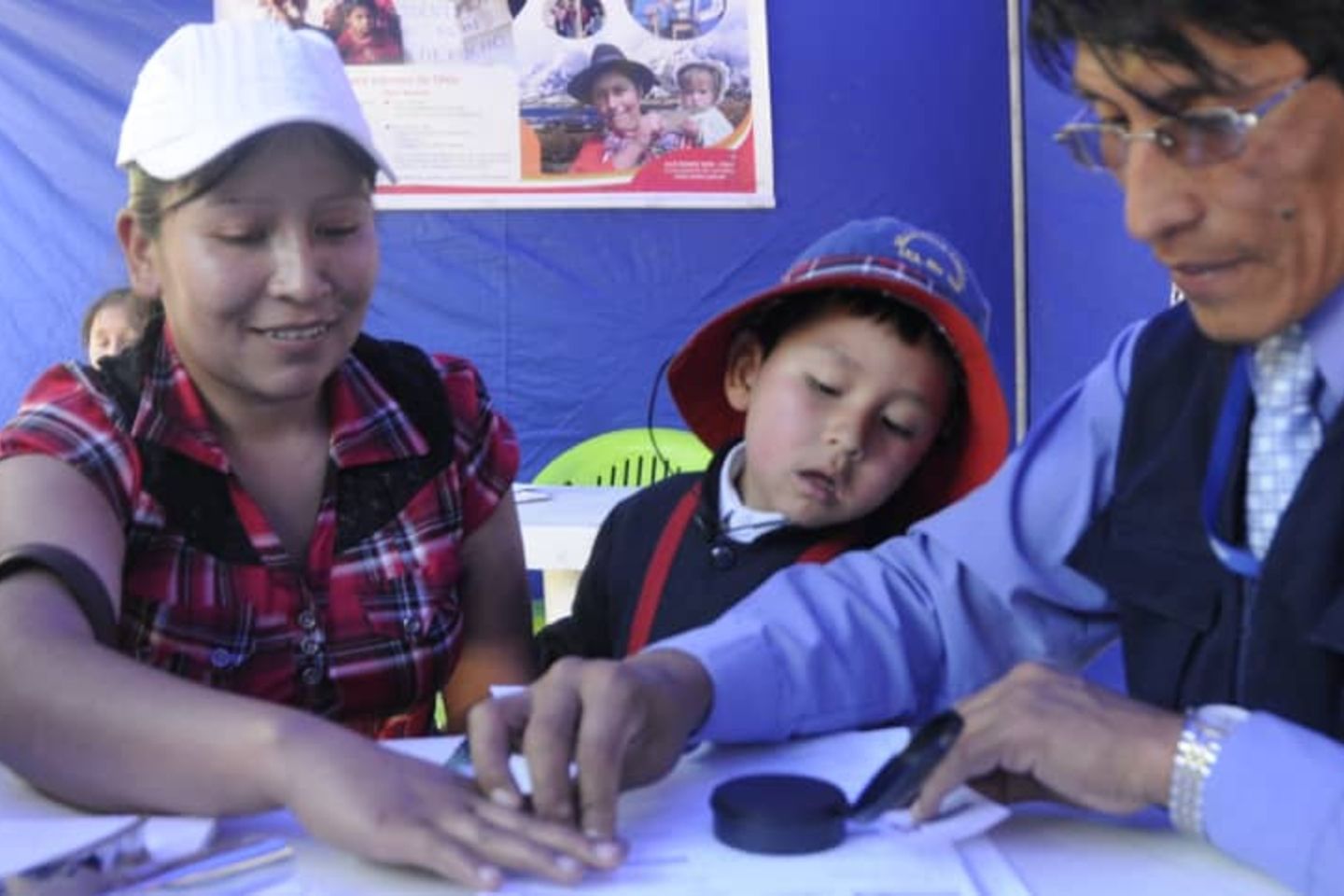
Your family and friends know you – your name, your age and where you are from. At the same time, you do not exist. That is because you never obtained a birth certificate, a fact that now impedes you from exercising your civil rights. Access to education and healthcare and the ability to vote? Those are usually reserved for the legally alive.
This is the reality for almost 34 million people across Latin America and the Caribbean, according to the World Bank’s Identification for Development initiative – and having an officially unknown life has life-long consequences.
Interactive experience: What would my life be like if I were an invisible citizen? (in Spanish)

Medical centers are often reluctant to provide services to children without proof of identity and kinship, and according to an IDB investigation from 2013, children without a birth certificate are administered up to 13.9% fewer vaccines against dangerous or life-threatening diseases compared to their documented counterparts. In several Latin American and Caribbean countries, lack of documentation represents the single greatest barrier to vaccination. Moreover, in countries with public or subsidized health programs, the lack of documentation to verify citizenship can inhibit access to a wide range of health services, well beyond infancy.
Similarly, lack of official registration significantly affects access to education. Akin to health centers, schools may deny access to students who cannot validate their family situation or residence. According to research conducted by the IDB, children without registration across Latin America and the Caribbean are up to 17.7% less likely to be enrolled in school versus their documented peers. This contributes to having up to 25.3% lower probability of having access to primary education and up to 19.5% of having access to secondary school.
Video: the road to identity in Peru
Where Are the Birth Certificates?
While most receive a birth certificate in the facility where they were born or are entered a few days later into a civil registry, the birth registration process presents many difficulties for some. Barriers vary in each country, although most of those who lack registration come from low-income communities in isolated areas, have parents who also lack registration or belong to indigenous groups.
In the first case, the journey to the government office that oversees the registry can mean unaffordable costs in money and time.
"It was impossible for the poorest people to get their national ID. They had to pay for a birth certificate, pay for the photograph and travel from their town to a registration agency. It takes a day's work to pay for all these procedures," says Rodolfo Porras, the regional coordinator of the National Registry of Identification and Civil Status in Huancayo, Peru.
In mountainous Bolivia, the problem is particularly acute. Our research found that for every kilometer between a child’s birthplace and the civil registry, the probability that he or she will not be registered increases by 0.1%. The chances are further reduced when a child is born in winter, when travel is more difficult. As nearly 12% of Bolivia's communities are more than 25 km from the nearest office, the impact of distance is substantial. If a child lives 500 kilometers from the nearest registry, then, their chance of having a national ID in the future is only 50%.
For some, failure to register newborns may be due to lack of habit or lack of awareness of the importance. In families where parents (particularly mothers) lack registration, children are less likely to be registered. When a mother lacks a birth record in the Dominican Republic, her children are 32% less likely to have identification in the future.
In indigenous communities, an additional difficulty arises: the language gap. On average, those who speak an indigenous language have an 8.9% lower probability of having a birth certificate. In Peru, the main barrier to registration is associated with belonging to an indigenous community.
The Registration Push
The IDB has supported projects to promote registration in Peru, Uruguay, Ecuador, El Salvador, Honduras, Jamaica, Panama and Guatemala – our contribution to a 6% decrease in the rate of under-registration. In Ecuador alone, one of our initiatives helped reduce the under-registration rate in the adult population from 20% in 2006 to 2.5% in 2016.
A post shared by BID (@el_bid) on Sep 27, 2018 at 12:28pm PDT
Peru’s Huancavelica region was the site of a particularly innovative project. In 2010, the IDB provided a $500,000 grant to support the National Registry of Identification and Civil Status in the creation of strategy for itinerant registrars.
Teams traveled to the region’s remote towns, visiting citizens door to door. They came equipped with photographic equipment and the materials needed to provide birth certificates or registration documents on site. To assist indigenous communities, staff bilingual in Spanish and Quechua were also on hand.
Photo Gallery: providing an ID in Peru
A concurrent information campaign spread the word in public squares, on the radio and in other local media in the seven departments of the region. In a period of three years, the program registered 500,000 people.
One of the beneficiaries of the program, Candelaria, accompanied her 80-year-old aunt to the town square to obtain a national identity document. "My aunt is going to have her identity for the first time. She will be able to go to hospitals and collect her state pension," she said.
To learn more about what it is like to live without a legal identity in Latin America and the Caribbean, download Civil Registration and Vital Statistics as a Tool to Improve Public Management here!